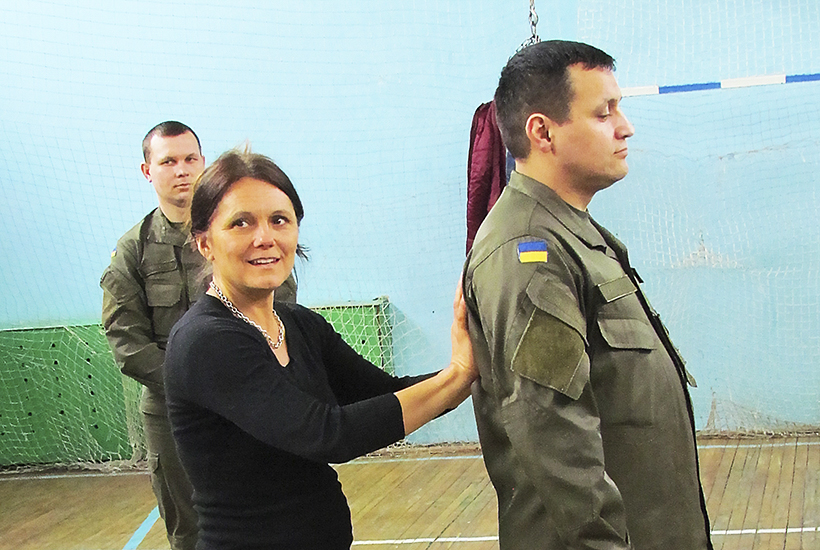Earlier this April, Professor of Dance and Environmental Studies Katja Kolcio traveled to Kiev, Ukraine at the invitation of the National Guard (NGU) to work with troops and researchers in the NGU. The purpose of Kolcio’s trip was a two-day workshop in which she instructed soldiers in somatic techniques to help assuage injuries sustained during combat.

C/O Wesleyan University
“Somatics works with the integration of body and mind,” said Kolcio. “It is concerned with personal and social change.”
Kolcio emphasized that she is not a healer; the purpose of her techniques—which include self-reflection, purposeful breath, weight manipulation, and muscle movement—is to build confidence and bodily awareness.
The program also aims to help civilians affected by the unrest in Donbass. After three years of war with Russia, many Ukrainians feel lost and hopeless.
“One of the main goals is to help people feel safe in their bodies,” Kolcio said of her work.
Prior to this visit, Kolcio was last workshopping in Ukraine during the 2014 Ukrainian Revolution of Dignity and Russian Invasion. In addition, she has been invited to teach by the Development Foundation, the East European National University in Lutsk, Ukraine, the National University in Zaporizhia, Ukraine, and the Kostyuk Institute for Psychology in Kiev.
“Various events [leave] a mark not only in memory but also in the body,” Kolcio told the Wesleyan Newsletter. “Thus, [when] helping patients recover from traumatic events, it is important to consider not only the memory…in a classic sense, but the memory of the body.”
Kolcio has authored a pair of books. The first is titled “Moveable Pillars” (2010 Wesleyan University Press) and the second “Faking it: The Necessary Blind Spots of Understanding” (2009 Cultural Studies/Critical Methodologies). She has also written a piece for the Contact Quarterly, titled “The Revolution of Dignity in Ukraine,” as well as for the Huffington Post, with an article named “Ukraine, A Utopian Mindset.”
She left The Ohio State University with a Ph.D. in Somatics, in addition to Master’s degrees in Dance and Political Science from OSU and the University of Georgia in Athens.
According to the newsletter, Kolcio’s work has been presented at Judson Church, the Katherine Hepburn Cultural Arts Center – Artists for World Peace Festival, New York University Black Box Theater, St. Marks Church, the Ukrainian Museum of New York, The Bridge for Dance, La Mama Experimental Theatre, the Ukrainian Institute of America, various community gardens throughout New York City, the Honchar Museum (Kyiv, Ukraine), Kyiv Mohyla Academy (Kyiv, Ukraine), Wesleyan, Duke, Antioch, Ohio State, Wittenberg, SUNY Brockport, and other colleges around the United States.
This semester, Kolcio is teaching Introduction to Dance (DANC 111), Intermediate Modern Technique (DANC 300), and Colloquium in Dance Research (DANC 398).
Kolcio will continue this work on the University campus; next fall, she is teaching a class called “Perspectives in Dance as Culture: What the Body Knows – Social Change and Revolution,” which will involve somatic techniques similar to those she implemented in her work with the National Guard. The class is labeled ENVS 377, DANC 377, or ANTH 325, and focuses on the study of artists who engender social change, culminating with a performative social action at the end of the term.
Comments are closed